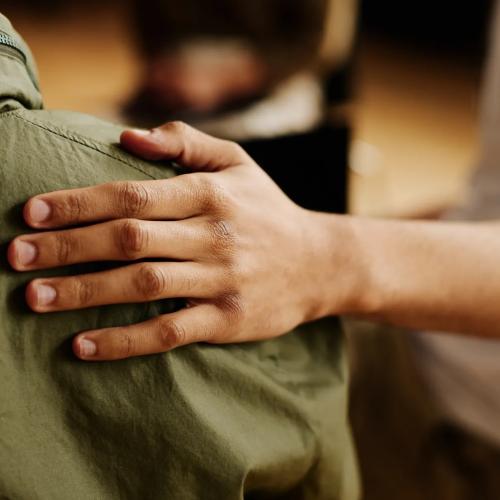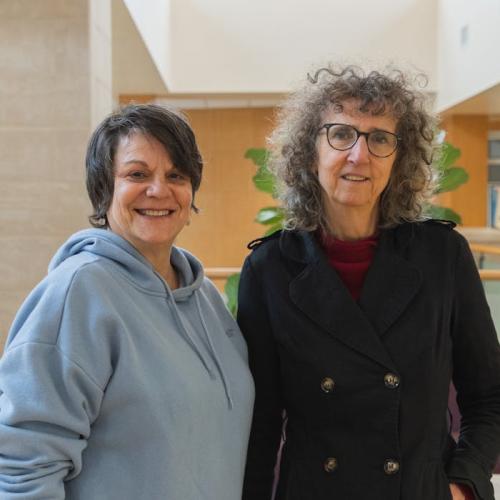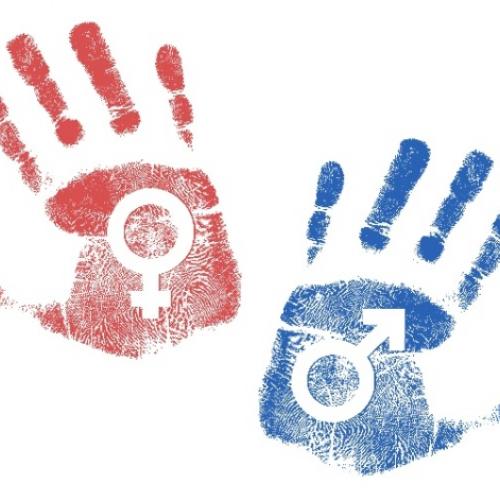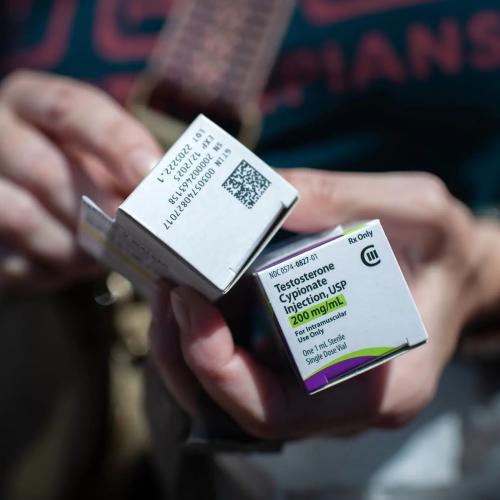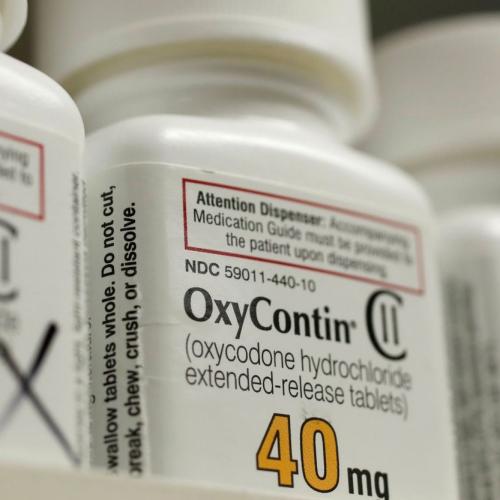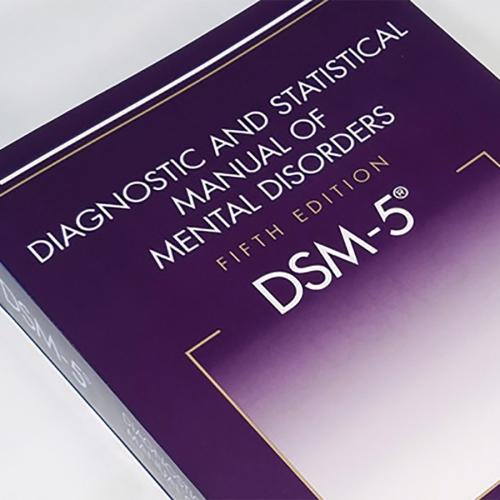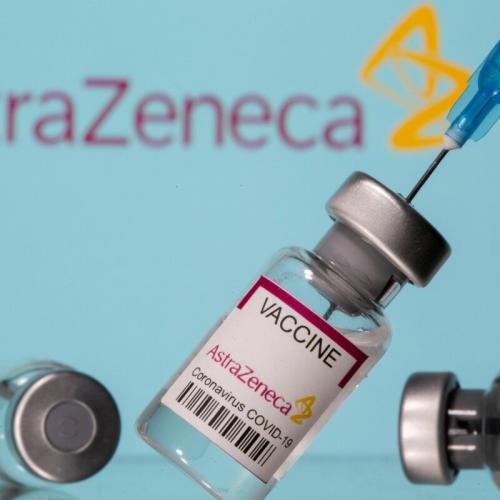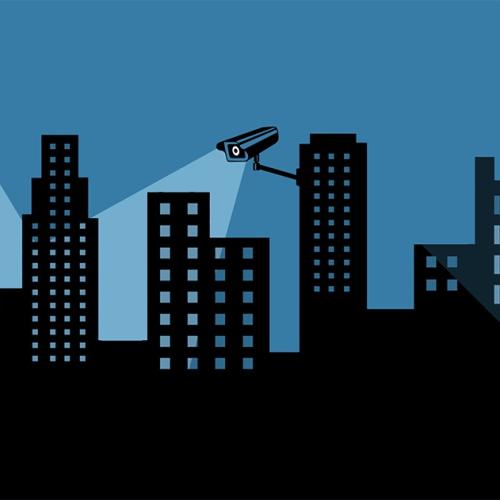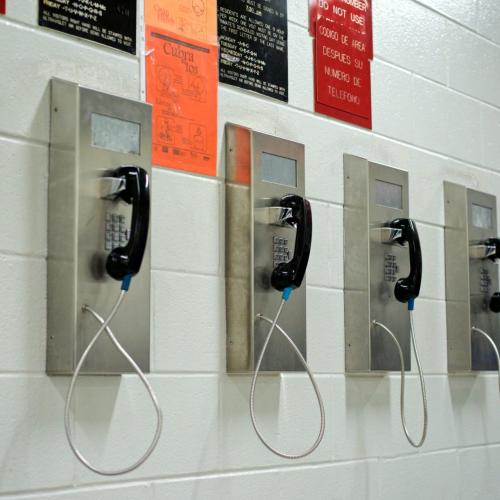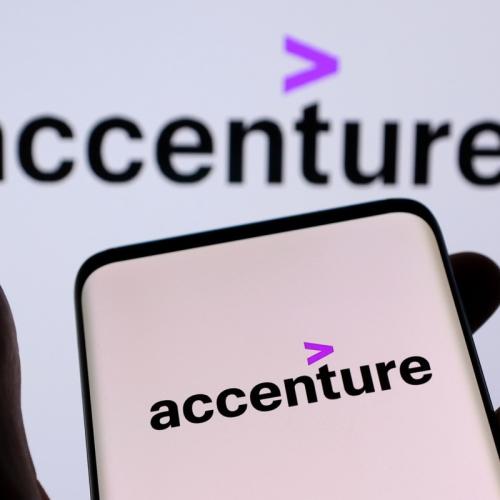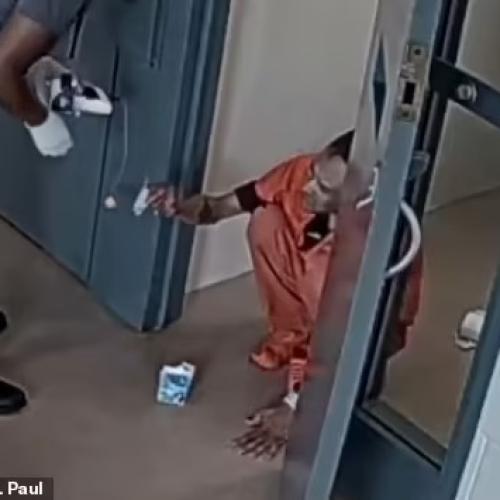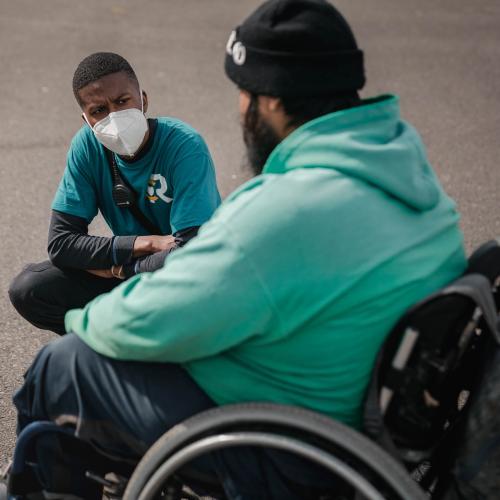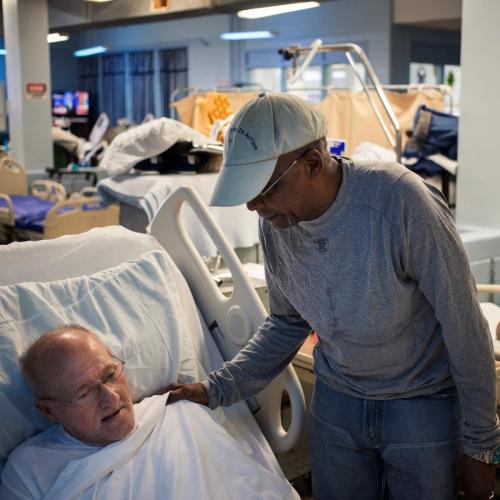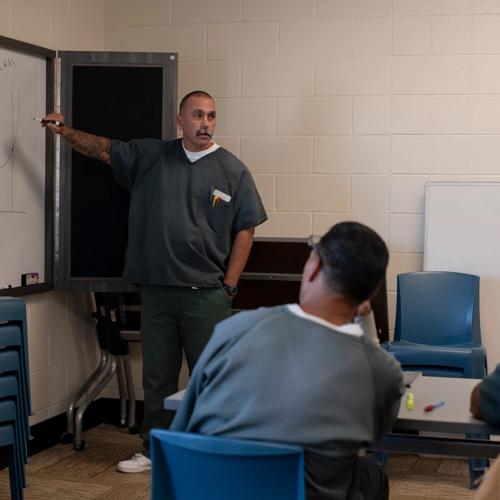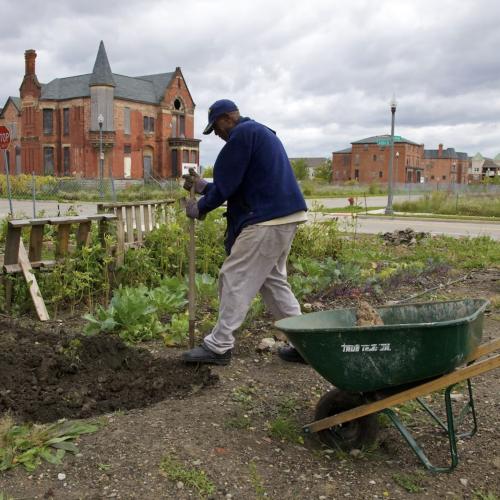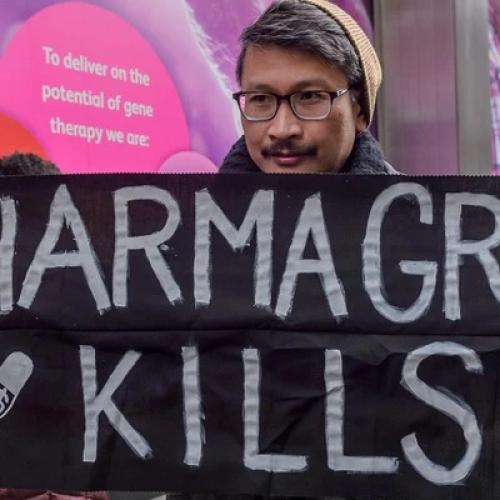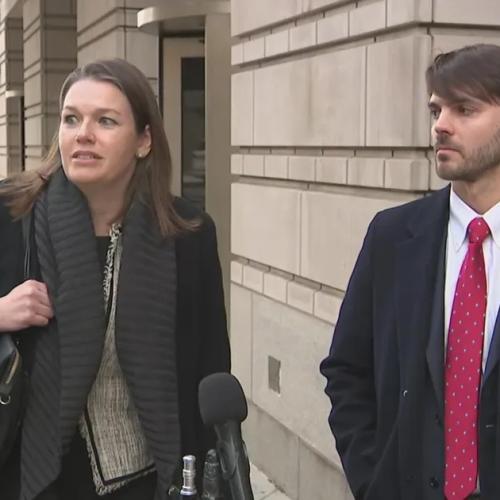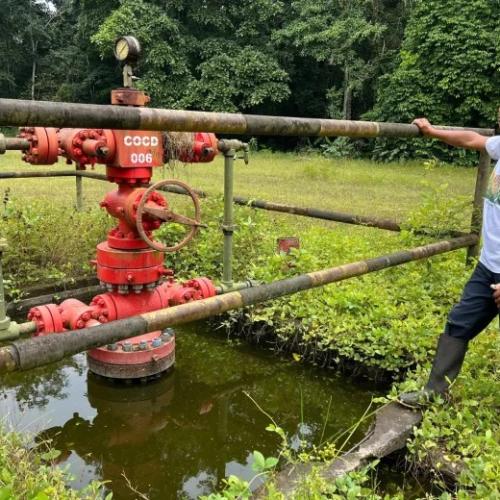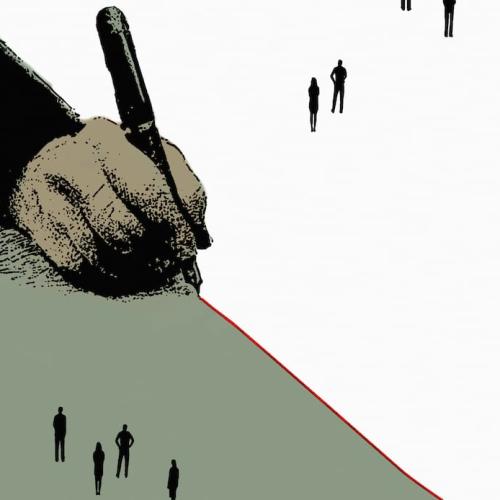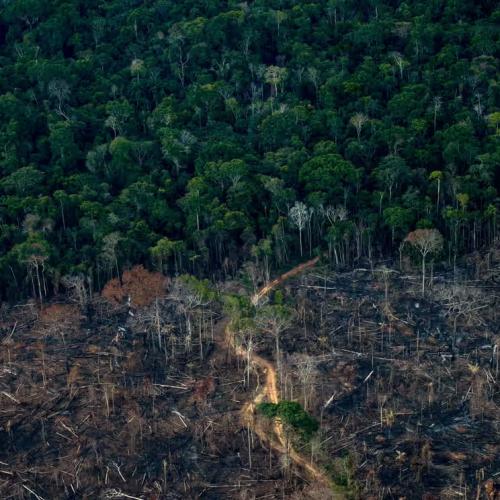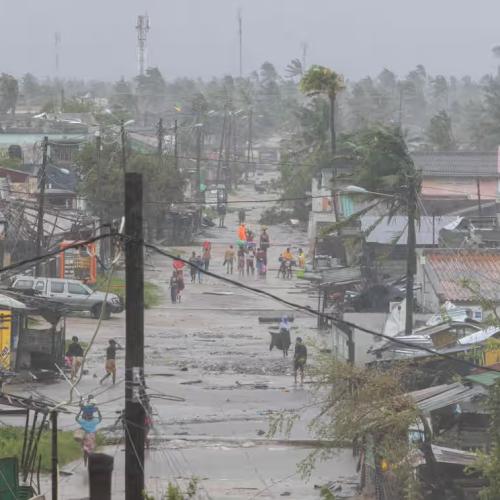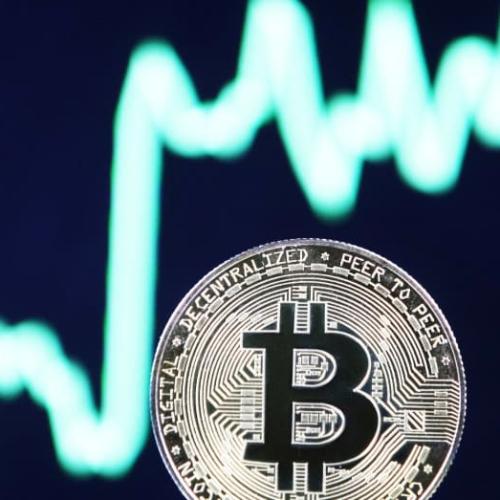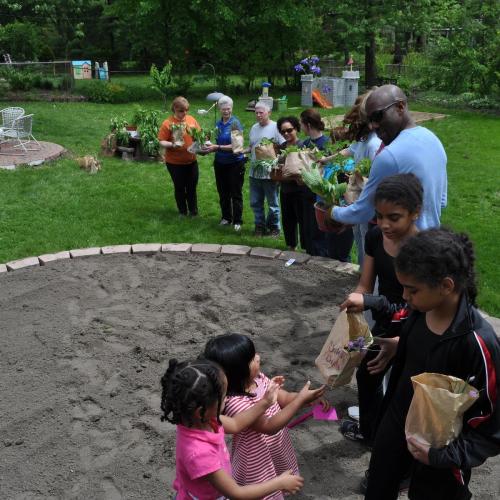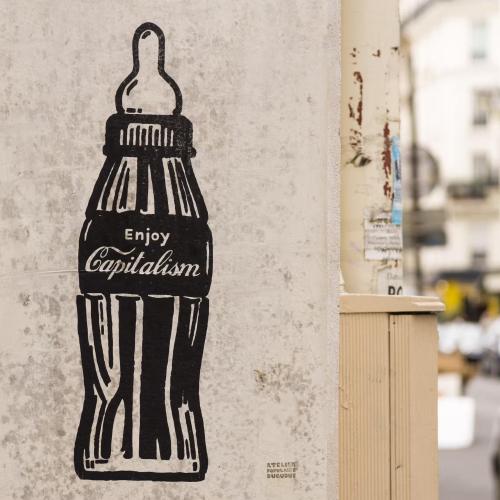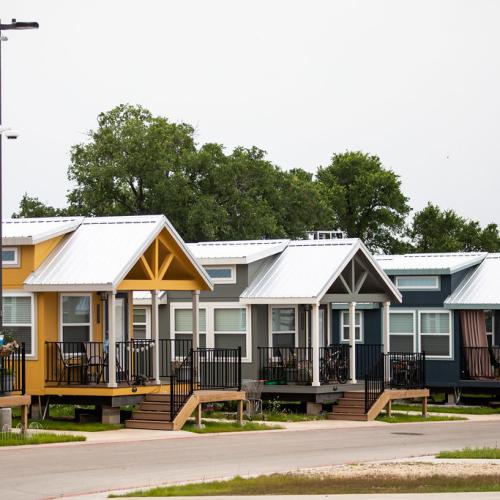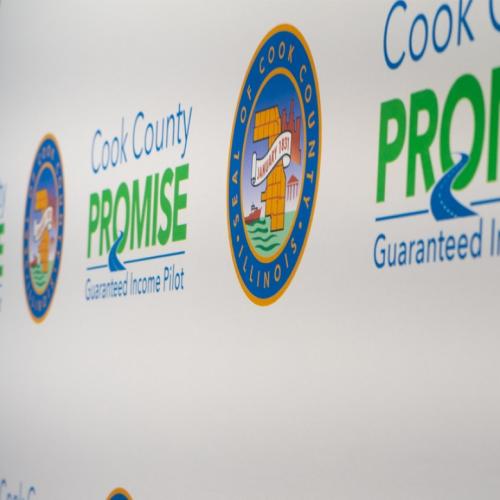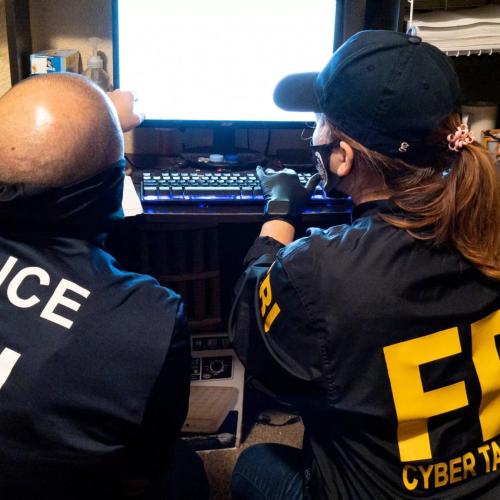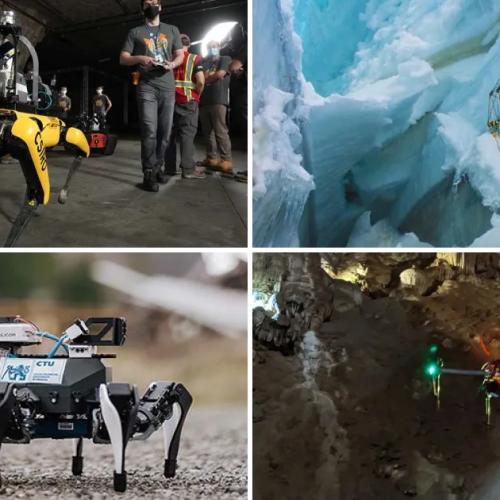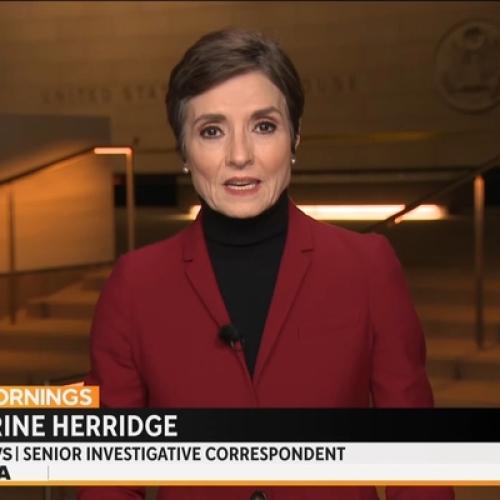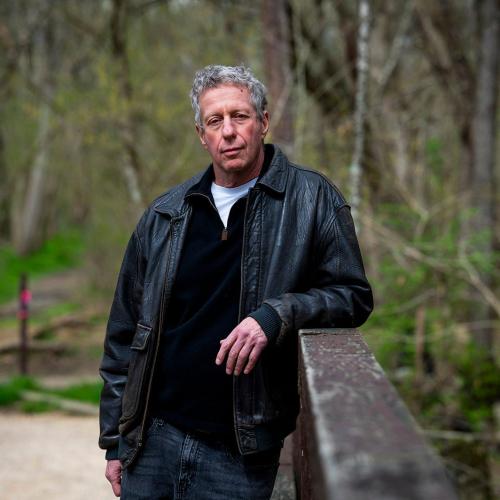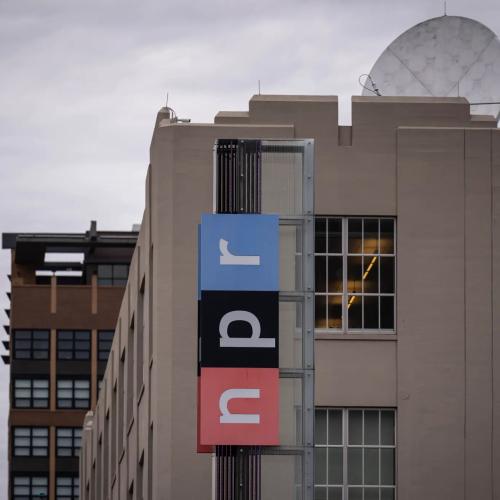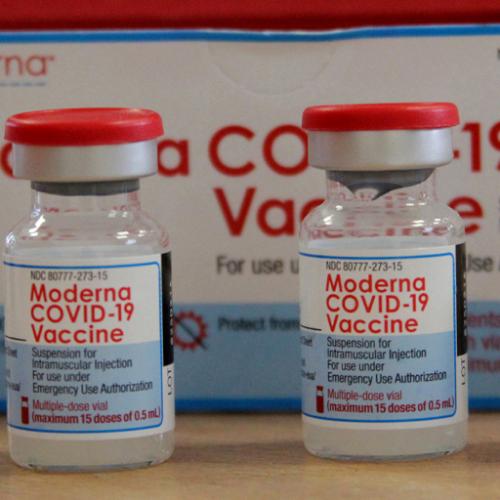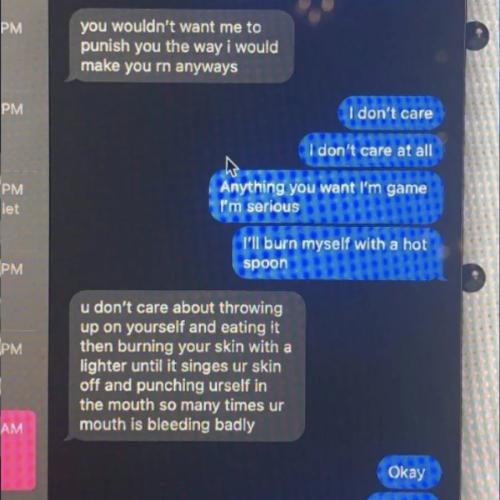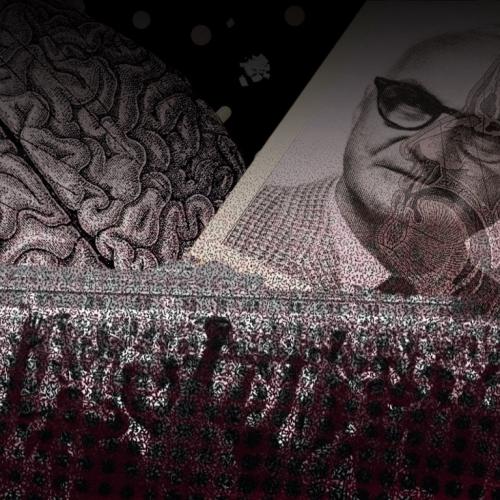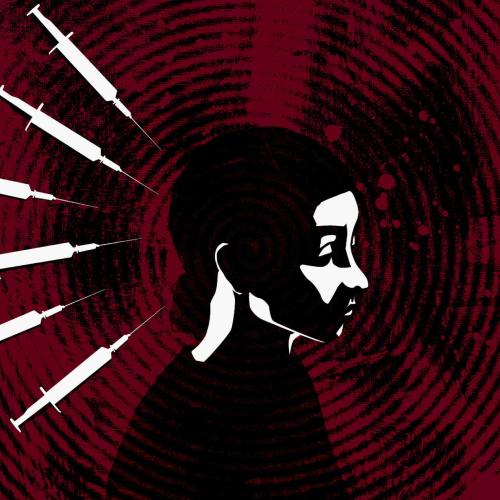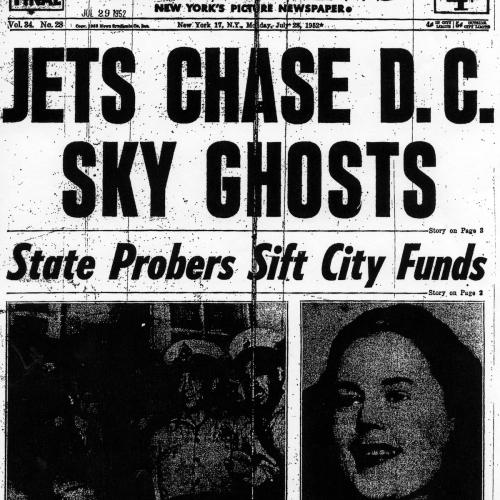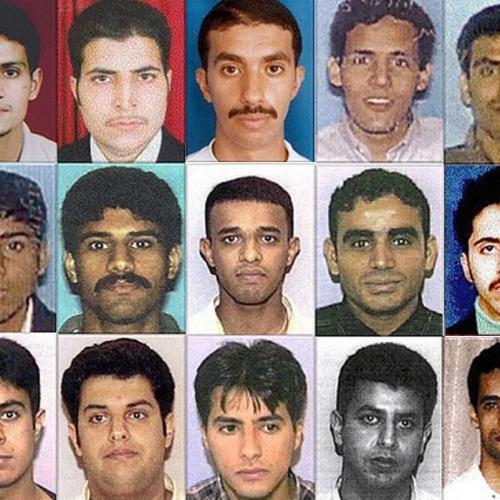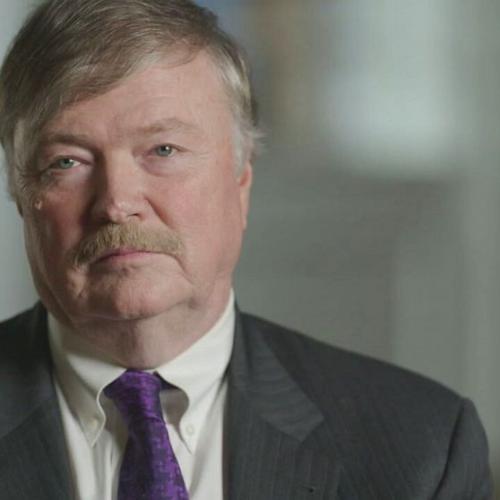Inspirational Media Articles
Below are key excerpts of some of the most inspiring news articles from reliable news media sources. If any link fails to function, a paywall blocks full access, or the article is no longer available, try these digital tools.
For further exploration, delve into our Inspiration Center.
Jimena Cordero is chopping up vegetables and fanning them out onto trays. Cordero is the farm manager at Ollin Farms, not far from Boulder, Colo. — she's put together bright pink and purple radishes, apple, fresh turnips. At the meeting with about a dozen local farmers, two state representatives, and the Colorado commissioner of agriculture, [Cordero's father Mark] Guttridge will explain how Boulder county has made creative investments in his farm that could be scaled up to the state or even national level. Before the meeting, Guttridge shows me one of those investments. A dozen sheep mill about in a field bordered by a simple white fence. Around the field is a special moveable type of fencing that Ollin Farms bought using grants from the Boulder County Sustainability Office. It allows them to move the sheep from one field to another, fertilizing as they go. The goal of these investments is "really building up our soil health," he explains. "That relates directly to the nutrient quality and nutrient density of the food — healthy soil grows healthy food." The county also makes an effort to get that healthy food out to different communities to be able to boost public health. That's where the Boulder County Public Health department comes in. It created a coupon program that low-income families — many of mixed immigration status — can use to get free fruits and vegetables from Ollin Farms' farm stand.
Note: Explore more positive stories like this in our comprehensive inspiring news articles archive focused on solutions and bridging divides.
The rich tapestry of life on Earth is fraying, due in large part to human-caused habitat loss and climate change. As more species disappear, researchers are racing to track this global decline in biodiversity to understand its consequences and counteract it through conservation initiatives. Those efforts rely on accurate animal monitoring, which can be difficult, time-consuming and costly. Now, in new research published in the journal iScience, researchers present evidence for a new low-cost, noninvasive tool that can be used to monitor animals: spiderwebs. They're using environmental DNA, or eDNA, which is simply different creatures' DNA just lying around in the environment. Previous work showed that webs are good sources of insect DNA, including what spiders are gorging on. But [evolutionary biologist Morton] Allentoft and [student Josh] Newton wanted to see whether the webs were also trapping DNA from vertebrate animals. So Newton ... collected spiderwebs. Back in the lab, Newton amplified the small amounts of DNA from the webs. They were filled with genetic material from animals. "It was wonderful," says Allentoft. "We could see these kangaroos [and] wallabies." There were nine other mammals, 13 species of birds, the motorbike frog and the snake-eyed skink. In other words, the technique worked. It represents a new way of tracking animal biodiversity and alerting us when we should intervene to conserve native species.
Note: Explore more positive stories like this in our comprehensive inspiring news articles archive focused on solutions and bridging divides.
Last week, the International Court of Justice issued a preliminary ruling that the charge brought by South Africa that Israel is guilty of genocide in Gaza is "plausible." The court called on Israel to take all measures to prevent the killing of civilians in the Palestinian enclave. The war began after Hamas struck southern Israel on October 7, killing some 1,200 people and taking more than 200 hostages. The day of the attack has been described as the deadliest day for Jews since the Holocaust. When [Holocaust survivor Estelle] Laughlin was a schoolgirl in Warsaw, children regularly pelted her and the other Jewish kids with pebbles. "We were so frightened," she recalls. "The antisemitism was right in front of me — it was so visceral." For Laughlin, besides luck, it was her mother and sister who helped her make it out of the camps alive. "Love maintained us," she says. She says she survived with an enduring sense of compassion and love for humanity, including for the Germans. "Without those values, survival would be hardly meaningful," she says. Laughlin says she's holding the Jewish pain of this war alongside the Palestinian pain. "When the dignity of any human being is diminished, the dignity of all humanity is diminished," she says. "Not only in relationship to my community but to any community of innocent people being attacked." When Laughlin considers the Palestinians living in Gaza, she says, "I identify with their plight ... with their isolation that the rest of the world keeps on going on as though nothing happened, and their world is crumbling." "I feel their pain," she adds. She longs for a better way forward.
Note: Check out the 12 organizations working for Israel-Palestine peace. Explore more positive stories like this in our comprehensive inspiring news articles archive focused on solutions and bridging divides.
When you imagine a 3D-printed home, you probably picture a boxy concrete structure. As 3D printing’s popularity has grown in the construction industry — thanks to its efficiency when it comes to time, energy and cost — carbon-intensive concrete has become the go-to building material. But a project in Maine has set its sights on something different: a neighborhood of 600-square-foot, 3D-printed, bio-based houses crafted from materials like wood fibers and bioresins. The aim: a complex of 100-percent recyclable buildings that will provide homes to those experiencing houselessness. In late 2022, an initiative between the University of Maine and local nonprofit Penquis unveiled its prototype — BioHome3D, the first 100-percent recyclable house. Now, the pioneering project is working toward completing its first livable housing complex. It will be fully bio-based, meaning all materials will be derived from living organisms such as plants and other renewable agricultural, marine and forestry materials. As the materials are all 100-percent recyclable, so become the buildings. The materials are also all renewable. And thanks to its natural composition, the home acts as a carbon sink, sequestering 46 tons of carbon dioxide per 600-square-foot unit. The materials for this project will mainly come from wood left over by local mills. “The wood fiber material that’s used in the mix is essentially waste wood here in Maine,” says Jason Bird, director of housing development for Penquis.
Note: Don't miss pictures of beautiful homes built by this process at the link above. Explore more positive stories like this in our comprehensive inspiring news articles archive focused on solutions and bridging divides.
Boogying the night away produces meaningful improvements in one's body mass and waist circumference in people who are overweight or obese, a new study found. Dancing was also seen to improve blood pressure, insulin sensitivity, physical fitness, cognitive disorders, hypertension, cardiovascular ailments, diabetes, and mental health—in other words, all the root causes of the non-communicable diseases that kill most people in the West. The researchers believed that dance would be a more ideal form of exercise because it is sustainable—it's a sociable, entertaining way of exercising that participants will enjoy, rather than a drudgery they have to push themselves through. “Dance is effective on fat loss in people overweight and obese and has a significant improvement on body composition and morphology,” said Zhang Yaya, a Ph.D. student at Hunan University, China. To get their results, published in the journal PLoS ONE, the team studied data from 646 participants who were overweight and obese across ten different studies. They found that dance is very effective for improving body composition and showed that more creative dance types had the most pronounced body composition improvement when compared with traditional dance. Improvements were also found in overweight children and patients with Parkinson’s disease.
Note: Explore more positive stories like this in our comprehensive inspiring news articles archive focused on solutions and bridging divides.
When the bell rings at Jerusalem's Hand in Hand school, you hear something that's not common in Israel: the sound of young people's voices rising together in laughter and conversation in both Hebrew and Arabic. Israeli society is largely segregated. The separation begins at kindergarten, when Jewish and Arab children are sent to different schools and experience completely separate education "tracks" or systems. "Arabs go to Arab schools in their neighborhoods and Jews go to Jewish schools in the areas where they live," says Nour Younis, events manager for Hand in Hand. Hand in Hand [was] founded in 1998 by a group of parents who wanted their children to grow up differently. What began as two kindergarten classes in Jerusalem and Galilee has now become six campuses nationwide, with some 2,000 students. The school's eventual goal is to create a fifth track of education within the Israeli school system. Today there are four options: Arab schools and three Jewish tracks — secular, religious and ultra-Orthodox. The students at Hand in Hand campuses are around 60% Arab and 40% Jewish. There is a waiting list of Arab children who would like to attend. Since Oct. 7 ... this school has become a rare oasis of freedom for Palestinians who say they can be harassed or worse for expressing their anguish over the war. "For our students, this is a safe place, a safe environment," says [school vice principal Engie] Wattad.
Note: Explore more positive stories like this in our comprehensive inspiring news articles archive focused on solutions and bridging divides.
Scientists have developed a new type of fuel cell that can provide endless power through electricity harvested from dirt. A team from Northwestern University in the US say the book-sized unit could be used to power sensors used in farming, as well as remote devices in the Internet of Things (IoT). The technology works by generating electricity from naturally-occurring bacteria within the soil, offering a sustainable and renewable alternative to toxic and flammable batteries. “These microbes are ubiquitous; they already live in soil everywhere,” said George Wells ... at Northwestern University. “We can use very simple engineered systems to capture their electricity. We’re not going to power entire cities with this energy. But we can capture minute amounts of energy to fuel practical, low-power applications.” The soil-based microbial fuel cell (MFC) is based on a 113-year-old technology first developed by British botanist Michael Cressé Potter, who was the first person to successfully generate electricity from microorganisms. It took until the 21st century for the first commercial applications to be proposed, with Foster’s Brewing using a prototype to convert the yeast in brewery wastewater into electricity. The latest fuel cell was tested in wet and dry conditions to power sensors measuring soil moisture and detecting touch, outlasting the power of similar technologies by 120 per cent.
Note: Explore more positive stories like this in our comprehensive inspiring news articles archive focused on solutions and bridging divides.
India’s famous potholes actually saved a life on Friday. The ‘late’ Darshan Singh Brar was being transported to the Indian version of a wake after his untimely death from a chest infection at the age of 80. Family, relatives, and friends had already gathered for a banquet and cremation, when the ambulance he was being caried in received a nasty jolt from a pothole on the roads in Nising, in far-Northern India’ Haryana state. It was then that Mr. Brar’s grandson who was onboard the ambulance at the time noticed his hand moving. Checking his pulse and finding—to his great shock—there was one, he notified the driver to immediately turn toward the nearest hospital. He was declared alive and savable, and was referred to the Rawal Hospital in the city of Karnal. “It is a miracle. Now we are hoping that my grandfather recovers soon,” said Balwan Singh, another of Mr. Brar’s grandsons. “Everyone who had gathered to mourn his death congratulated us, and we requested them to have the food we had arranged. It is God’s grace that he is now breathing and we are hoping he will get better.” Doctors at Rawal Hospital said that the grandfather is breathing without the aid of a ventilator and his heartbeat has normalized. They can’t say for certain why the other hospital declared him dead, but speculated it may have been a technical error. The next time you are planning to go to town hall or the council about the potholes on your street, consider the story of Darshan Singh Brar.
Note: Explore more positive stories like this in our comprehensive inspiring news articles archive focused on solutions and bridging divides.
A time bank does with time what other banks do with money: It stores and trades it. “Time banking means that for every hour you give to your community, you receive an hour credit,” explains Krista Wyatt, executive director of the DC-based nonprofit TimeBanks.Org, which helps volunteers establish local time banks all over the world. Thousands of time banks with several hundred thousand members have been established in at least 37 countries, including China, Malaysia, Japan, Senegal, Argentina, Brazil and in Europe, with over 3.2 million exchanges. There are probably more than 40,000 members in over 500 time banks in the US. Many time banks are volunteer community projects, but the one in Sebastopol, [CA] is funded by the city. “Every volunteer hour is valued around $29,” Wyatt calculates. “Now think about the thousands of dollars a city saves when hundreds of citizens serve their community for free.” The Sebastopol time bank has banked more than 8,000 hours since its launch in 2016. Five core principles ... guide time banks to this day: First, everyone has something to contribute. Second, valuing volunteering as “work.” Third, reciprocity or a “pay-it-forward” ethos. Fourth, community building, and fifth, mutual accountability and respect. “What captured me is that people are doing things out of their own good heart,” Wyatt says. “Many years ago, a woman ... said to [civil rights lawyer] Edgar Cahn, ‘I have nothing to give.’ Edgar Cahn listened and finally responded, ‘You have love to give.’ And the whole room just went silent.” Every hour of service is valued the same, no matter how much skill and expertise a task takes, whether it’s an hour keeping someone company, helping them file their taxes or repair a roof. Through a simple online platform, every member can offer and request services and then register the hours they served or received. Especially during and since the Covid pandemic, the bank has also been an antidote to the epidemic of loneliness.
Note: Explore more positive stories like this in our comprehensive inspiring news articles archive focused on solutions and bridging divides.
Our moms and dads used to tell us about their mile-long walk to school. But if we’re talking about peda-powered travel to school, this man has set a new standard. Leaving his home in Conakry, Guinea, on a bike, Mamadou Safayou Barry traveled across the whole of West Africa and the Sahara Desert’s road network—2,500 miles—and across 5 countries in the mere hopes he’d be accepted into an Egyptian university. Along the way, the husband and father of one crossed Benin, southern Mali, Togo, and Chad, as well as some of the most bandit-filled areas on Earth, including parts of Burkina Faso and Niger. He was detained without cause or charge on three separate occasions, twice in Burkina Faso and once in Togo. It was in Chad, nearly four months after he left home, that he caught an auspicious wind. A local journalist reported on his efforts which led to a local philanthropist getting the man a flight to Cairo. Once there, the prestigious Al-Azhar University offered him a full scholarship, first for Islamic studies, then for engineering. Will Smith heard about Barry’s successful voyage, and gave a surprise congratulations to the man. He video-called the Guinean in Cairo to gift him a new bicycle and a laptop for his studies. “When I saw him, I was confused in my head, because I had seen that man before,” Barry told the BBC from Cairo. “Then I remember—it’s Will Smith! Wow ... I used to watch his films. I was sat on a chair in front of Will Smith!”
Note: Don't miss the deeply inspiring video of Mamadou Safayou Barry's interview with Will Smith about his fascinating journey across Africa. Explore more positive stories like this in our comprehensive inspiring news articles archive focused on solutions and bridging divides.
On the outskirts of Austin, Texas, what began as a fringe experiment has quickly become central to the city’s efforts to reduce homelessness. To Justin Tyler Jr., it is home. Mr. Tyler, 41, lives in Community First! Village, which aims to be a model of permanent affordable housing for people who are chronically homeless. In the fall of 2022, he joined nearly 400 residents of the village, moving into one of its typical digs: a 200-square-foot, one-room tiny house furnished with a kitchenette, a bed and a recliner. Eclectic tiny homes are clustered around shared outdoor kitchens, and neat rows of recreational vehicles and manufactured homes line looping cul-de-sacs. There are chicken coops, two vegetable gardens, a convenience store ... art and jewelry studios, a medical clinic and a chapel. In the next few years, Community First is poised to grow to nearly 2,000 homes across three locations, which would make it by far the nation’s largest project of this kind, big enough to permanently house about half of Austin’s chronically homeless population. Many residents have jobs in the village, created to offer residents flexible opportunities to earn some income. Last year, they earned a combined $1.5 million working as gardeners, landscapers, custodians, artists, jewelry makers and more. Ute Dittemer, 66, faced a daily struggle for survival during a decade on the streets before moving into Community First five years ago with her husband. Now she supports herself by painting and molding figures out of clay at the village art house. A few years ago, a clay chess set she made sold for $10,000 at an auction. She used the money to buy her first car.
Note: Explore more positive stories like this in our comprehensive inspiring news articles archive focused on solutions and bridging divides.
When Ben was 11 years old, his parents noticed that his grades dropped. He stopped talking about school. “These are all typical signs there might be a bullying problem,” says Bettina Dénervaud, co-founder of the Swiss initiative Hilfe bei Mobbing, which translates as “Help with Bullying.” She and her two colleagues use a 30-point checklist to evaluate if there is an underlying issue of mental, emotional and physical bullying or something else — maybe a conflict, which might require conflict resolution. Instead of being punished, the bullies are invited to help the bullied student. In a 2008 study that looked at 220 bullying cases, the No-Blame Approach was successful in 192, or 87 percent, of the cases. In most schools that were evaluated, it only took two or three weeks for the bullying to stop. The second step is the core of the No-Blame Approach. It includes calling six to eight children that the teacher chooses into a meeting that is set up as a social get together: in Ben’s case, three of the bullies, three students Ben felt he could count on and two “neutral” tag-alongs. The children are not told the meeting is about Ben. “I have a problem,” the teacher might start the discussion. “I noticed some students don’t feel supported in class. What can we do to help them, for instance, Ben?” The third step includes follow-ups with all students, including Ben, within the next few weeks. If necessary, the intervention might be repeated or tweaked. "The goal is to change the social dynamic," Dénervaud says. Younger children often start crying in these meetings, Dénervaud has observed, “because they realize for the first time what has been happening and how unhappy the bullying victim has been."
Note: Explore more positive stories like this in our comprehensive inspiring news articles archive focused on solutions and bridging divides.
You can’t help but applaud Nick Romeo for showing the workable alternatives to capitalism and the moral driver behind them – everything from the way companies are incorporated to how employees are hired, paid and enabled to share in the value they create. There is no need for ordinary workers to be pawns in a system that makes humanity and ethics secondary to the unbending logic of the marketplace and blind, selfish capital. He takes us to the Marienthal job guarantee programme in Austria. Today the town is piloting the impact of a universal jobs guarantee for all of its out-of-work citizens. Essentially there is a job for anyone unemployed for more than 12 months – you can even have a hand in designing what it is you will do with your time when you work – and you get paid up to £2,000 a month. People opt to work rather than receive welfare benefit, and there is ample evidence it raises their self-worth while delivering a service – care to the elderly or tidier parks – that was not there before. Better still, it costs the state virtually nothing because unemployment benefit is simply transferred to the now employed worker’s pay packet. Romeo takes his reader from one inspiring example to another – from the Purpose economy programme in the US, in which firms are dedicated to delivering greater purpose in perpetuity, to examples of companies paying genuine living wages to their employees to encourage commitment. Around 7,000 B Corps, which commit in their founding constitution to put social goals before profit, now trade in more than 90 countries – there were effectively none 25 years ago.
Note: Explore more positive stories like this in our comprehensive inspiring news articles archive focused on solutions and bridging divides.
On a late-November afternoon, at the head of a cramped classroom, David Carrillo stood at a small podium and quizzed 17 students on macroeconomic terminology. For the two-hour class, Carrillo, the adjunct professor teaching for Adams State University, mostly kept his hands in his pockets as he lectured students in green uniforms. Like his students at the Colorado Territorial Correctional Facility, Carrillo, 49, also wears green. He holds a position that is extremely rare in prison: He’s an incarcerated professor teaching in a prison bachelor’s degree program. A new initiative at Adams State — one of the first of its kind in the country — focuses on employing incarcerated people with graduate degrees as college professors, rather than bringing in instructors from the outside. Most people in Colorado prisons only make 80 cents a day, so it would take them around 17 years to earn the $3,600 that Carrillo gets for a single class. Higher wages help incarcerated individuals build savings to help cover their basic needs when they are released. Poverty can often be a driver of decisions that land people back in prison. Adams State hopes to eventually employ more graduates of their own programs in the future. Currently ... around 100 people in prisons across the country are working towards their MBA through Adams State like Carrillo did. The 36-credit print-based MBA correspondence program costs $350 per credit for a total of $12,600, plus textbooks.
Note: Explore more positive stories like this in our comprehensive inspiring news articles archive focused on solutions and bridging divides.
Direct cash programs are growing across America, offering a path out of poverty through economic mobility. During a two-week period in 2022, nearly a quarter of a million people in the Chicago area applied for the Cook County Promise Guaranteed Income Pilot, the nation's largest direct cash pilot, and ultimately 3,250 families were randomly selected to get $500 a month for two years. Similar direct cash initiatives have changed the physical, emotional, and economic lives of families that participate. Children are better cared for, and they excel in school. Adults experience improved health and stronger familial relationships. And crucially, when recipients have economic stability, they can plan and invest in their futures—many, for the first time in their lives. The Stockton SEED project, which gave $500 a month for two years to 130 people, saw results that mirrored prior direct cash research. The study ... found that the expansion of finances and the predictable, stable source of income brought by the program created "self-determination and capacity for risk-taking not present prior," meaning that when participants could predictably afford child care, transportation, and training programs they had the financial freedom to invest in their own futures. People have big ambitions, no matter the size of their bank account. For most Americans facing economic struggles, their chief problem is a lack of cash, and not a lack of character.
Note: Explore more positive stories like this in our comprehensive inspiring news articles archive focused on solutions and bridging divides.
Britni Ricard is the CEO of her own cosmetics company, COTA Skin Care, which she started in 2019. Last year, she also became a landlord when she bought her first investment property. The apartment building in New Orleans has 10 units and, according to Ricard, many of the tenants are single women with children. That made her think of her own childhood growing up in public housing, and how difficult Christmastime could be for her mom. "It was tough," Ricard told CBS News. "My mom was a single woman raising three children alone, and watching her continuously struggle as a child and wanting to figure out, 'How can I help?'" In November, Ricard gathered her tenants for a pre-holiday meeting and, while decked out in a chartreuse suit, she delivered a gift to her tenants that would make Santa Claus green with envy: one month of free rent. A video of her surprise announcement went viral on TikTok. In the video, Ricard also offered to organize a seminar to help her tenants become homeowners. Kedesha Dunn lives in one of the building's units with her two boys. The single mom said Ricard's gift would allow her family to celebrate more and worry less. "Now I, you know, I don't have to go try to take a loan out or something like ask my family for money," Dunn said. "Like, I can do it now. Like, I can do it." "I'm an emotional person," Dunn added. "I start to cry. 'Cause I'm just like, that is so sweet. She's uh, better than Santa Claus at this point. ... Like a guardian angel."
Note: Explore more positive stories like this in our comprehensive inspiring news articles archive focused on solutions and bridging divides.
It all started in 2019, when Bjartmar Leósson started to see a rise in bike theft in Reykjavík. The bus driver and self-confessed “bike nerd” decided to start tracking them down and returning them to their rightful owners. Four years and, he estimates, hundreds of salvaged bikes later, the 44-year-old has developed a reputation in the Icelandic capital among cyclists and potential bike thieves. Known as the Reykjavík “bike whisperer”, people across his home city turn to him for help to find their missing bicycles, tools and even cars. Often, he says, bike thieves hand over bikes without being asked and some former bike thieves have started to help him. Now when somebody loses their bike it can take as little as 48 hours to track it down on his Facebook page, Hjóladót ofl. tapað fundið eða stolið (Bicycle stuff etc lost, found or stolen), updated every few hours with missing and found items and which has more than 14,500 members. “It’s not only me,” he says. “Many times someone sees a bike hidden in a bush, takes a picture and then someone else comments ‘hey that’s my bike’. So everyone’s looking out.” Now when people’s bikes get stolen, he says, the police direct them to his Facebook page. When there is a finder’s fee he gives it to people living in [a homeless] shelter. He he says he now sees the bike theft problem is often driven by addiction, aided by long rehab waiting lists and closures during the summer.
Note: Explore more positive stories like this in our comprehensive inspiring news articles archive focused on solutions and bridging divides.
In 2012, according to FBI data, 2,774 violent crimes were reported to the Flint Police Department. In 2022, 985 were reported. Like other “legacy cities” that have experienced significant economic decline and population loss, Flint, [Michigan] is still struggling. But now, through the Genesee County Land Bank’s Clean & Green program, Ishmel and hundreds of other residents have been mowing vacant lots. Greening projects like these maintain abandoned spaces, either by mowing them or converting them into gardens and parks. But these projects don’t just make the neighborhood feel safer. Researchers who have been studying the effects of greening in Flint; Philadelphia; Youngstown, Ohio; and other legacy cities have shown repeatedly that it actually reduces violent crime. “It is one of the most consistent findings I’ve ever had in my 34-year career of doing research,” says Marc A. Zimmerman, professor at the University of Michigan School of Public Health. A review of 45 papers found that the presence of green spaces, including parks and trees, reduces crime in urban areas. In Flint, Zimmerman and his colleagues compared streets where community members maintained vacant lots through Clean & Green with streets where vacant lots were left alone, over five years. The maintained ones had almost 40 percent fewer assaults and violent crimes. One study found that while simply maintaining vacant lots reduced burglaries, turning them into gardens reduced assaults.
Note: Explore more positive stories like this in our comprehensive inspiring news articles archive focused on solutions and bridging divides.
There's a quiet alley in Japan's capital where passersby often do a double-take. Sharing space with chic cafes and world-class bars, the tiny fruit and vegetable stand seems to have been teleported from a country road far away. Weather-beaten wood tables groan under stacks of carrots, potatoes, mandarin oranges and other fresh farm produce. But what makes the stall even more remarkable in the heart of Tokyo is that payment is on the honor system — customers just toss coins into an old mailbox — and most of the items on offer are priced at 100 yen, or about 70 cents, in a neighborhood where fresh food usually goes for much, much more. A handwritten mission statement on the stall is addressed: "Dear young people." "I came here from Hiroshima with nothing. Lived on watermelon for a month, but couldn't ask mom for help. Thirty years on, I grow plenty of vegetables," the note continues. "Tomo-chan is on your side, so don't worry about the future." Opened five years ago, the produce stand has struck a chord with some of the city's hard-pressed younger residents, revealing a well of hidden despair beneath the glitter and gloss of a world-famous metropolis. The greengrocer with a heart of gold is rarely glimpsed by her grateful customers. "I want young people to feel that they're not forgotten, that they are treasured," she said. "That not everyone is out for himself. I can make money anytime. Right now, I want to give young people a helping hand."
Note: Explore more positive stories like this in our comprehensive inspiring news articles archive focused on solutions and bridging divides.
Since 2017 the U.S.-based charity GiveDirectly has been providing thousands of villagers in Kenya what's called a "universal basic income" – a cash grant of about $50, delivered every month, with the commitment to keep the payments coming for 12 years. This week a team of independent researchers who have been studying the impact released their first results. Their findings ... compare the outcomes for about 5,000 people who got the monthly payments to nearly 12,000 others in a control group who got no money. The researchers also compared the recipients to people in two other categories: nearly 9,000 who received the monthly income for just two years; and another roughly 9,000 people who got that same two years' worth of income but in a lump-sum payment. When it came to measures of well-being such as consumption of protein or spending money on schooling, all of the groups who were given cash were better off than people in the control group that got no money. Those who got the money in a lump sum vastly outperformed people who were promised the same amount for just two years but received it in monthly installments. Lump-sum recipients had 19% more enterprises – businesses such as small shops in local markets, motorbike taxis and small-scale construction concerns. And the lump sum recipients' net revenues from their businesses were a whopping 80% higher. The grants did not seem to fuel inflation.
Note: Explore more positive stories like this in our comprehensive inspiring news articles archive focused on solutions and bridging divides.
Important Note: Explore our full index to key excerpts of revealing major media news articles on several dozen engaging topics. And don't miss amazing excerpts from 20 of the most revealing news articles ever published.








